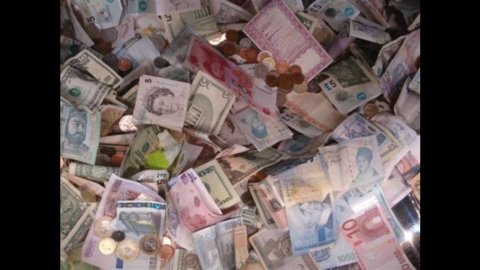Concerns over the prospects of weak US economic growth as well as lingering fears about the eurozone sovereign debt crisis continue to weigh on risk appetite and support demand for safe-haven assets.
Gold – The yellow metal hit a new all-time high for the sixth consecutive day. The bar reached $1895,65 an ounce and is approaching the $1900 mark. Since the beginning of the year gold has increased by 30%, since 2010 by 70% and since 2000 by 544%. Economists are divided between those who see the next speculative bubble in the yellow metal and who believe that the high price already contains the bubble risk. And those who don't believe gold's appreciation will soon come to a halt as its price rests on solid foundations. These analysts believe that thanks to the devaluation of currencies – a consequence of the policies of governments that want to repay their debts by issuing currency of a lower currency – gold will continue to appreciate. According to Bank of America Merrill Lynch data, gold could reach 2000 dollars an ounce in the next 12 months.
Silver – Few people still talk about the white metal but it has grown by 42% since the beginning of 2011 and is traded at 43,8 dollars. According to Eric Sprott, of the Canadian financial giant of the same name specializing in precious metals, the reserves of silver are much more limited than those of gold and given the disproportion between the price of the yellow metal and that of the white metal, in the coming years the price of silver should increase. Investing Advice analyst George Maniere also believes the white metal is likely to hit $2015 an ounce in 125.
Platinum – Platinum is also growing and has reached a three-year high at 1.888 dollars an ounce. Many analysts believe it will continue to grow at least over the next two years.
Swiss franc – Maybe it's too late to buy francs: the Swiss National Bank (SNB) has set zero rates on short-term bonds and even a negative rate on two-year bonds to curb the huge flows towards Swiss government bonds. However, the move does not seem to have had the desired effect because many investors continue to buy securities in the Swiss currency, which this year has strengthened by 11,6%: the best performance among the 10 major currencies in the world.
Norwegian kroner – Even the currencies of the Northern countries did not report disappointing data. Since November 30, the Norwegian krone has appreciated by 12% against the dollar and in August it reached its record (for 4 years) against the euro. However, a too strong krone threatens exports from Norway, the country with the largest trade surplus of any economy with a triple A rating. The Norwegian currency, usually linked to oil trends, has continued to strengthen this year even in the moments when the crude went down. It is the sign of a strong economy which, according to OECD data, will grow by 3,3% this year and 4% in 2012 with a solid fiscal position. The central bank decided in August to keep interest rates at 2,25%.
Swedish crowns – The Swedish krona is also a solid and liquid currency based on a strong economy. However, in the event of a slowdown in the euro area, Sweden would be more affected than Norway and the krone could feel the effects. What the analysts of Jc & Associati have noticed is that since 21 July, the date on which the rescue package for Greece was announced, the relationship between the spread - between the Italian BTPs and the German Bunds - and the crown has reversed Swedish (but also Norwegian). In fact, while previously an inverse relationship was observed, now as the differential increases, the Nordic currencies appreciate: a sign that they are considered safer.
Australian dollar – In the last two years it has appreciated by more than 30%. Yields are very high today (between 4 and 5%) but after the latest economic data, which showed a sharp increase in unemployment, the central bank could cut interest rates and the Australian dollar could depreciate.





